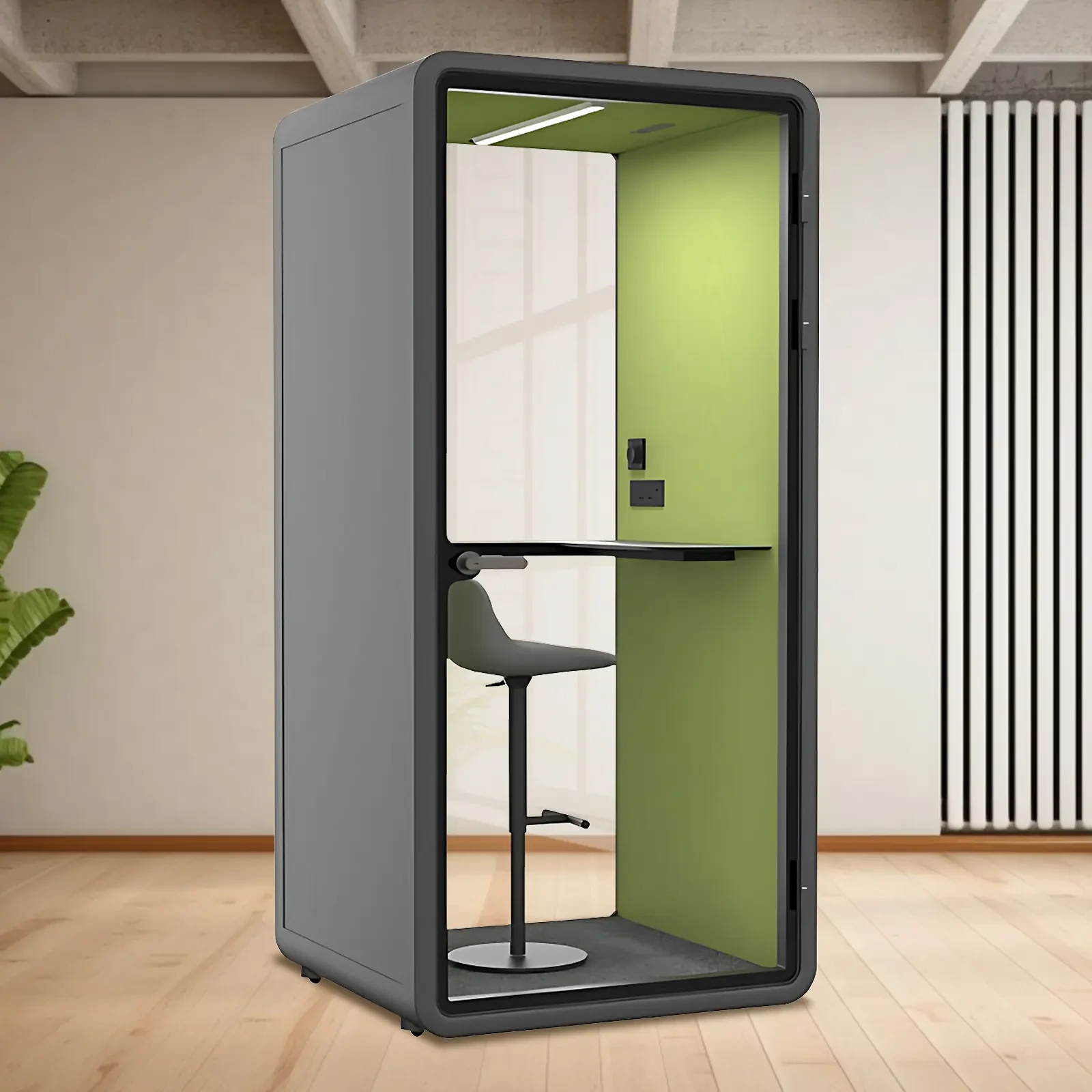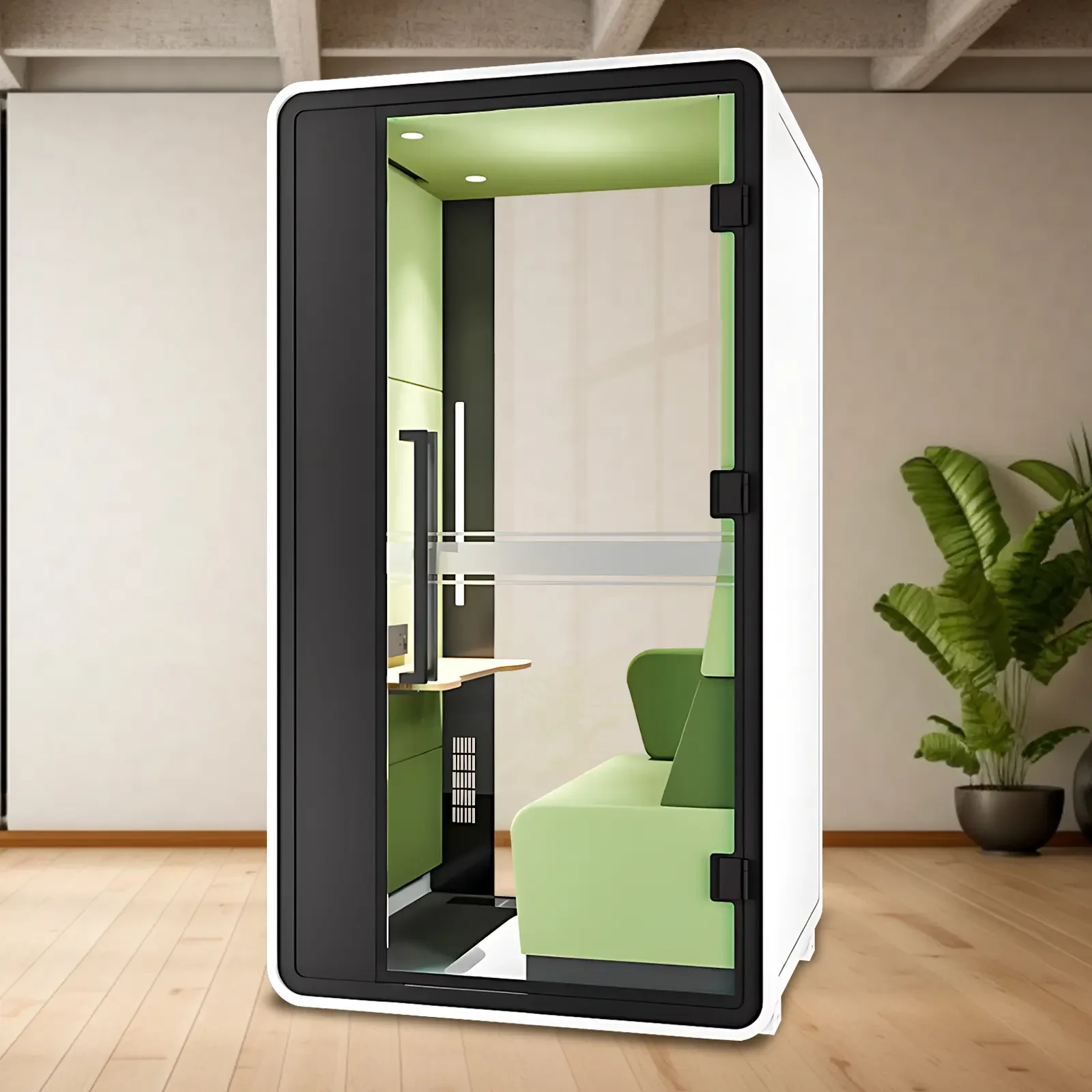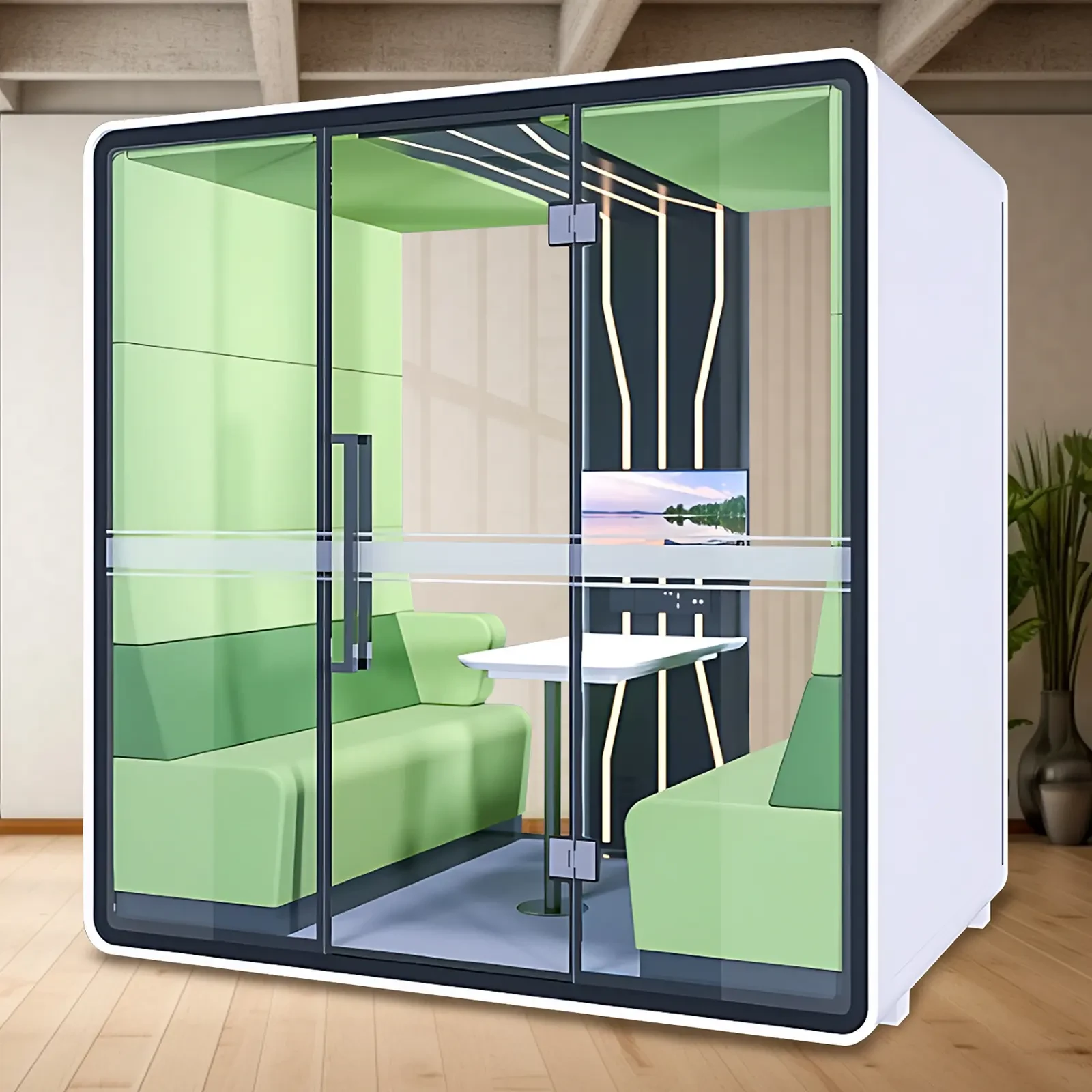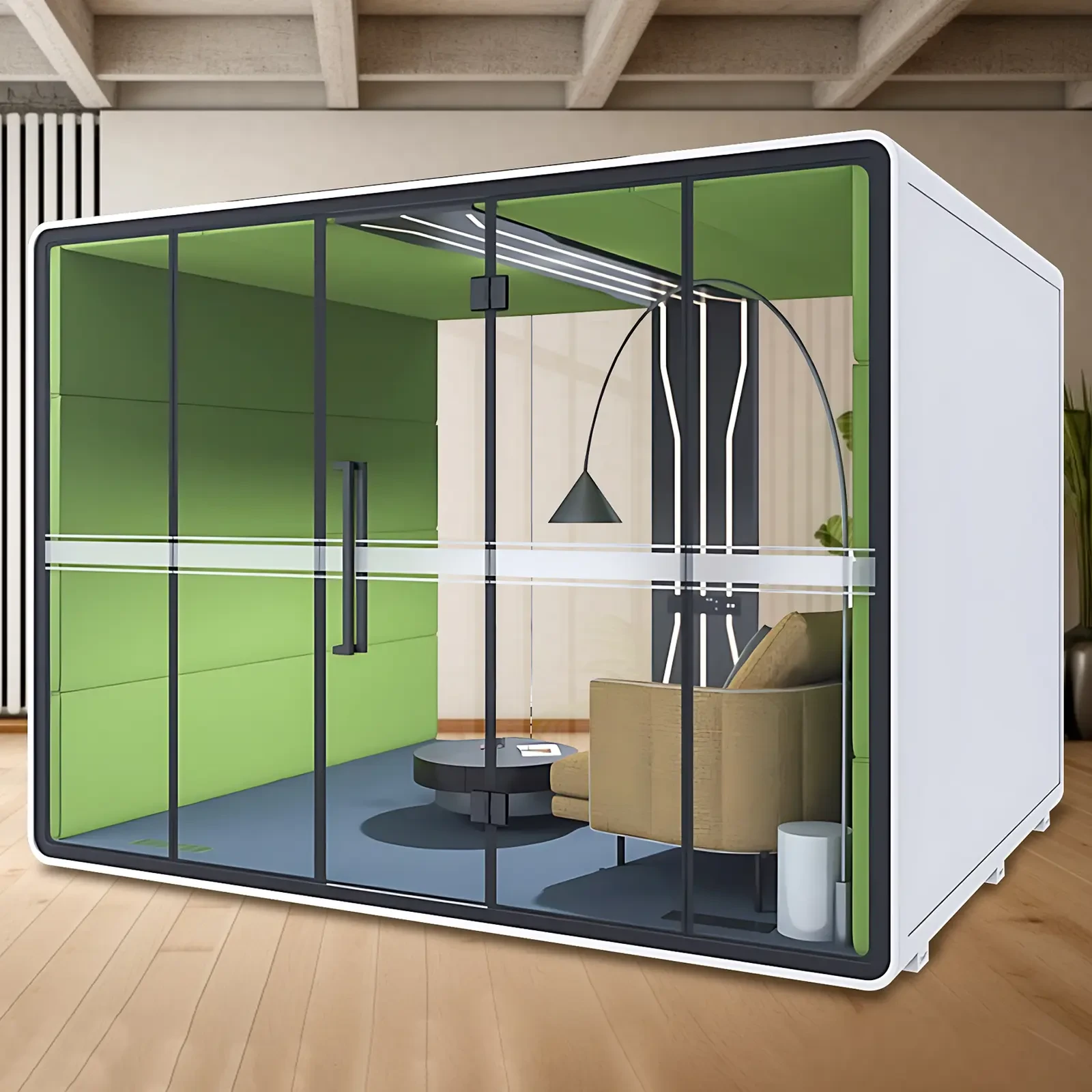Purchasing principles: Performance first, safety first, and experience above all else. Avoid specs and hype!
1. Key indicator: Sound insulation performance - the real power of quiet
1) Core requirement: Really quiet!
2) Three key factors to consider:
-Speech noise reduction (DsA - ISO 23351 standard): This specifically measures the ability to block out human voices (100Hz-5000Hz)! This is the most annoying office noise! ≥25 (Good): Daily conversations become muffled; ≥30 (Excellent): Normal conversations are inaudible; ≥35 (Professional): Even loud shouting is difficult to discern. (Regular STC indicators are not accurate enough!)
-Background noise: The cabin's own operating noise (such as ventilation) should be low! Be wary of vendors using large fans to create a false sense of "quietness," only to end up with a buzzing sound inside the cabin. An excellent level is ≤ 30 dB(A).
- Reverberation Time (RT60): The residual reverberation time after a sound stops. Too much turbidity affects clarity. Ideal range: 0.2 - 0.4 seconds.
3) Pitfalls to Avoid:
Beware of general "decibel reduction" claims without mentioning test conditions and standards!
Ignoring detailed sealing (acoustic bridging) such as door gaps and cable holes will significantly compromise sound insulation!
4) Benchmark Reference: Excellent soundproofing cabins can achieve DsA ≥ 30 dB (Excellent), interior background noise ≤ 30 dB(A), and RT60 ≤ 0.3 seconds. (For example, the Mofang Quick Cabin soundproofing cabin achieved a measured DsA of 30.3 dB, background noise of 22.7/34.1 dB(A), and RT60 ≤ 0.23 seconds, making it a leading soundproofing system in China.)
2. Breathing Lungs: Ventilation System - The Lifeline of Comfort
1) Core Requirements: Quiet! Efficient! Fresh air! Silence doesn't mean suffocating!
2) Key Considerations:
-Ventilation Rate: Ensure basic ventilation requirements (recommended ≥20 times/hour for a single-occupancy cabin), and the inlet and outlet air vents must be professionally silenced.
-Operational Noise: Ideally, the ventilation system's inherent noise level should be ≤ 30 dB(A); otherwise, it becomes a new noise source.
-Thermal Comfort: Can it be connected to an external air conditioner or have independent temperature control? This is essential for extended use in the summer!
3) Pitfalls to Avoid: Small fans can't achieve both high airflow and low noise levels! A system without professionally silenced ducts is a disaster!
4) Benchmark Reference: Professional silent cabins use labyrinthine ducts and silencers to minimize ventilation noise while ensuring high airflow (e.g., >50 times/hour for a single-occupancy cabin). (For example, the Mofang Silent Cabin: A single cabin experiences over 50 air changes per hour, with a 1.2-minute indoor recirculation cycle. Equipped with a maze-style air duct and fans equipped with silencers, internal noise is minimized.)
3. Cornerstone of Quality: Structure and Materials - Guarantees Durability and Environmental Protection
1) Core Structure: Steel frame > Pure panel assembly (more stable, more load-bearing, more resistant to deformation, and longer lifespan).
2) Key Materials:
-Walls: Multi-layer composite structure (steel plate/damping layer/sound-absorbing foam, etc.) for superior sound insulation and absorption compared to single materials! See the cross-section!
-Fire Safety: All materials (especially fillers) must meet national flame retardant standards of B1 or higher! A test report is required!
-Environmental Certification: Panels, adhesives, and coatings must be certified E1 or higher to eliminate formaldehyde pollution! Health first!
3) Pitfalls to Avoid: Be wary of low-priced, low-quality panels (easily deformed, poor sound insulation, and environmental hazards); ignoring fire safety is a major risk! 4) Benchmark Reference: High-quality silent cabins utilize a 1.0mm+ thick steel frame with a multi-layer composite acoustical package (sound-absorbing cotton + sound insulation panels + environmentally friendly interior finishes), no wood filling, and meet B1 flame retardancy and E1 environmental protection standards. (For example, the Mofang silent cabin: 1.0mm thick steel + acoustical package + aluminum alloy frame + sound insulation panels + sound-absorbing panels + wool-like interior finishes, with no wood panels inside the walls, meeting national B1 standards. The interior also features a three-layer composite sound-absorbing material design: mesh fleece + sound-absorbing panels + wool-like interior finishes/fabrics, saying goodbye to tinnitus.)
4. Experience the Soul: Humanized Design and Craftsmanship - "Ease of Use" is Key
1) Key Points:
-Door: Heavy-duty soundproof doors with multiple magnetic seals are standard! The door closer should be smooth and silent, ideally with automatic closing to maintain a tight seal.
-Interior: Is the lighting soft, dimmable, and not glaring? Are there sufficient and strategically located power/network ports? Is the interior easy to clean?
-Installation and Maintenance: Is the modular design easy to transport and install? Is subsequent maintenance, such as replacing filters, easy?
2) Pitfalls to avoid: Poor door seals, loud opening and closing noises, insufficient internal sockets, glare, and a difficult-to-clean design—they're annoying to use every day!
3) Benchmark: BMF Quiet Cabin: Features include high-quality sealing strips (e.g., DowDuPont), floor-to-ceiling hinges to prevent door sag, silent door closers, ergonomic door handles, eye-friendly lighting (e.g., OSRAM + light guide panels), ample ports (sockets/USB/wireless charging), easy-to-clean interior, and quick modular installation (installed in 1 hour).

 USD
USD
 GBP
GBP
 EUR
EUR



